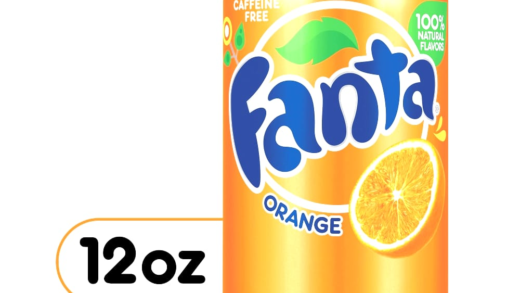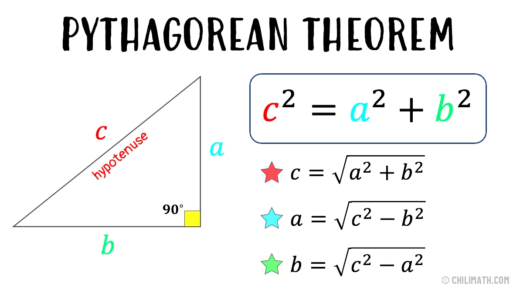Milk paint is a natural, eco-friendly paint option that stands out due to its unique ingredients and benefits. It dries quickly, adheres well to various surfaces without extensive prep, and is perfect for DIY projects. Its versatility extends to furniture makeovers, and it comes in a wide range of colors. Choosing milk paint supports sustainable practices and offers a durable finish for all your creative endeavors.
What is Milk Paint Made Of?
Milk paint is a unique, eco-friendly option for those looking to add a touch of charm to their projects. So, what is milk paint made of? The primary ingredients include:
- Milk Protein: The casein in milk acts as a binder, providing a strong adhesion to surfaces.
- Lime: This component helps in stabilizing the paint and adds to its durability.
- Natural Pigments: Derived from earth minerals and plants, these pigments give milk paint its vibrant colors.
- Water: Used to mix the ingredients and achieve the desired consistency.
What makes milk paint stand out is its non-toxic nature. It’s safe for both the environment and the user. Unlike conventional paints that contain harsh chemicals, milk paint is biodegradable and emits no harmful fumes. Additionally, it dries to a beautiful matte finish that enhances the texture of wood and other surfaces.
Benefits of Using Milk Paint
Choosing milk paint for your projects offers numerous benefits:
- Eco-Friendly: As mentioned, it’s non-toxic and biodegradable, making it a safer choice for your home and the planet.
- Versatile: Milk paint can be used on various surfaces, including wood, plaster, and even metal.
- Easy to Use: Mixing milk paint is straightforward. You only need to combine the powder with water to create a smooth paint.
- Durable Finish: Once dried, milk paint forms a tough surface that resists chips and scratches.
- Rich Color Palette: With an array of natural colors, it allows for endless creativity in design.
Milk paint is an excellent option for DIY enthusiasts and professionals alike. Its unique properties make it perfect for furniture restoration, home decor, and art projects.
How to Mix Milk Paint
Mixing milk paint is simple and can be done in a few easy steps:
- Gather Your Materials: You’ll need milk paint powder, water, a mixing container, and a stir stick.
- Measure: For best results, use a ratio of one part powder to one part water. Adjust based on desired consistency.
- Mix: Combine the powder and water in the container. Stir until you achieve a smooth, lump-free mixture.
- Let It Sit: Allow the mixture to rest for about 10-15 minutes. This helps the ingredients meld together.
- Check Consistency: If it’s too thick, add a little more water; if too thin, mix in more powder.
Following these steps will ensure you get that perfect consistency for your painting projects. Remember, mixing milk paint is a fun part of the process, so enjoy experimenting with different ratios!
How Quickly Does Milk Paint Dry?
Milk paint is known for its quick drying time, which can be a huge advantage for DIY projects. On average, milk paint dries to the touch within 30 minutes to 1 hour. However, the complete curing process can take up to 24 hours. This means you can layer multiple coats in a single day, making it perfect for those who want to finish a project in a hurry.
Here are a few tips for timing your project right:
- Check Humidity: Higher humidity can slow down the drying process. Ideally, work in a well-ventilated space with low humidity.
- Temperature Matters: Warmer temperatures speed up drying time. If you’re working in a cooler environment, expect longer drying times.
- Thin Layers: Applying thinner layers of milk paint can help it dry faster. Thick coats take longer to cure.
- Fan It Out: Using a fan can help circulate air and speed up drying, but avoid direct airflow on the wet paint to prevent uneven drying.
Understanding these factors will help you plan your painting projects more efficiently, ensuring a smooth and timely completion.
Do You Need to Sand or Prime Surfaces?
When using milk paint, preparation of surfaces is crucial for achieving the best results. The question arises: do you need to sand or prime surfaces before applying milk paint? The answer depends on the surface you’re working with.
Here’s a quick guide:
- Wood Surfaces: Sanding is recommended, especially if the surface is rough or previously finished. This helps the paint adhere better. A light sanding with fine-grit sandpaper will do the trick.
- Metal Surfaces: Clean and sand the surface to remove any rust or grease. Priming with a suitable metal primer is also advisable for better adhesion.
- Plaster and Masonry: These surfaces usually do not need sanding, but they should be clean and free of dust. Priming is optional but can help with color uniformity.
- Previously Painted Surfaces: If the old paint is glossy, sanding is essential to create a rough texture for the milk paint to adhere.
Ultimately, taking the time to prep your surfaces correctly will lead to a more durable and beautiful finish.
Creative Uses for Milk Paint
Milk paint isn’t just for walls; its versatility opens the door to countless creative uses. Here are some fun projects to inspire your next endeavor:
- Furniture Makeovers: Revamp old furniture pieces with milk paint. Its rich colors and matte finish can transform a tired piece into a stunning focal point.
- Wall Art: Use milk paint to create unique wall art. Its texture and color variations can add depth to any room.
- Home Decor Items: Try painting picture frames, vases, or even wooden toys. Milk paint adds character and charm to everyday items.
- Craft Projects: Milk paint can be used for various craft projects, such as decorative signs or holiday decorations. The possibilities are endless!
With its eco-friendly properties and vibrant colors, milk paint is perfect for unleashing your creativity. Dive into your next project and let your imagination run wild!
Milk Paint Comparison to Other Types of Paint
Milk paint stands out in the vast landscape of paint options available today. Unlike traditional latex or oil-based paints, milk paint is a natural, non-toxic alternative. Here are some key differences that set milk paint apart:
- Ingredients: While most paints contain synthetic chemicals, milk paint is made from natural components like milk protein, lime, and pigments from earth minerals.
- Finish: Milk paint dries to a matte finish, giving surfaces a soft, velvety look, unlike the glossy finishes that many modern paints offer.
- Adhesion: Milk paint adheres well to porous surfaces without the need for a primer, while most other paints often require extensive surface preparation.
- Eco-Friendliness: Milk paint is biodegradable and emits no harmful fumes, which is a stark contrast to the volatile organic compounds (VOCs) found in conventional paints.
- Durability: Once cured, milk paint offers a tough finish that resists chipping and scratching, making it suitable for furniture and other high-use items.
These attributes make milk paint an attractive choice for eco-conscious consumers and DIY enthusiasts looking for something unique.
Is Milk Paint Eco-Friendly?
Milk paint is not only a delightful choice for your painting projects, but it is also an environmentally friendly one. Its eco-friendly nature stems from several factors:
- Non-Toxic Ingredients: The primary ingredients in milk paint are natural and non-toxic, making it safe for use in homes, especially those with children or pets.
- Biodegradability: Unlike synthetic paints that can linger in landfills for years, milk paint is biodegradable, breaking down naturally over time.
- No Harmful Fumes: Milk paint does not emit harmful fumes during application or drying, improving indoor air quality.
- Sustainable Production: Many manufacturers of milk paint prioritize sustainable sourcing and production methods, further minimizing environmental impact.
For those who value sustainability and health, choosing milk paint is a responsible decision that aligns with eco-friendly living.
Can Milk Paint Be Used on Furniture?
Absolutely! Milk paint is an excellent choice for furniture projects. Its unique properties make it particularly suitable for various furniture applications:
- Versatile Application: Milk paint can be used on wood, metal, and even previously painted surfaces, making it a versatile option for any furniture makeover.
- Restoration Projects: It’s perfect for restoring old furniture, as it adheres well and enhances the natural beauty of the wood grain.
- Customizable Finish: You can create a variety of finishes, from distressed looks to solid colors, allowing for creative freedom in your designs.
- Durable for Everyday Use: Once cured, milk paint provides a tough finish that can withstand daily wear and tear, making it ideal for pieces that get a lot of use.
Whether you’re upcycling a vintage piece or refreshing a modern item, milk paint offers endless possibilities for furniture projects.
Available Colors in Milk Paint
Milk paint comes in a wide array of colors, offering something for every design aesthetic. The colors are derived from natural pigments, resulting in rich, muted tones that add character to any space. Here’s a look at some popular color options:
- Earthy Tones: Colors like ochre, sienna, and slate evoke a natural, rustic feel.
- Pastels: Soft shades like mint green, pale pink, and sky blue provide a light, airy atmosphere.
- Bold Hues: For those looking to make a statement, vibrant colors such as cobalt blue and deep red can add a pop of personality.
- Custom Mixing: One of the joys of milk paint is the ability to mix colors to create custom shades, allowing for truly unique designs.
Exploring the color palette of milk paint opens up a world of creative possibilities, ensuring your projects can be as unique as you are.





Comments are closed.